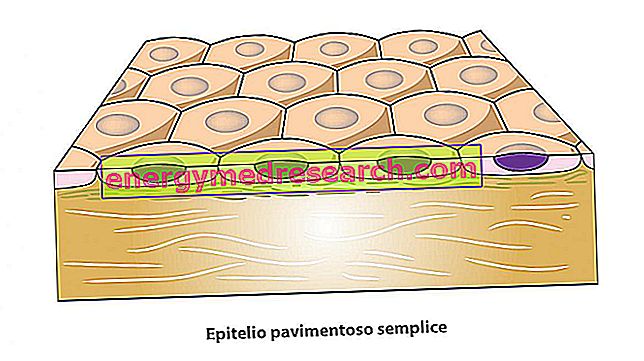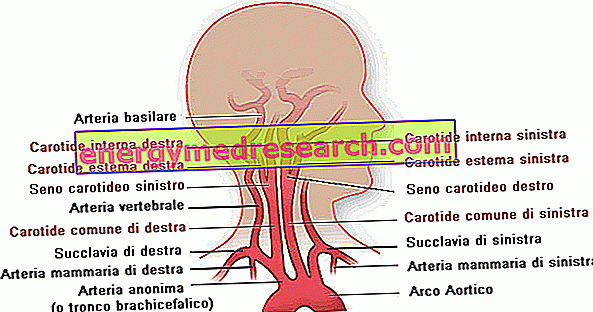
Simple epithelia consist of a single row of cells. On the basis of the shape of these cells, simple paved (flat), cubic and cylindrical epithelia can be distinguished.
Simple paving epithelium
It is formed by a single layer of flattened cells, arranged next to each other like the floor tiles. Also the nucleus, consequently, is flattened.
Being composed of a single layer of cells wider than tall, the "insulating" function of this epithelium is lower than, for example, that offered by an epithelium formed by several layers of cubic cells.
Not surprisingly, therefore, we find the simple paved epithelium at the level of surfaces NOT subjected to particular mechanical stress and which must be crossed more or less importantly by some substances (oxygen, carbon dioxide, water, etc.).
The simple squamous epithelium constitutes the filtering epithelium of the so-called Bowman's capsule (in the kidney), but also that which forms the pulmonary alveoli (where it allows the diffusion of respiratory gases). We then have the case of the endothelium, which coats the inside of the blood vessels (arterial and venous).
Deepening on endotheliums
- the endothelium covers both the inside of the large caliber vessels and the capillaries. However, while the former have walls formed by several layers of tissue (of which the endothelium represents the innermost one), the capillaries are formed only by the endothelium and by the underlying, very thin, basal lamina. This is an important feature given that, while the large vessels have the function of conduction, the capillaries are entrusted with the exchange of nutrients and gases from the blood to the other tissues.
Depending on their location and morphology, the endothelium may have different degrees of permeability:
- Continuous endothelium : the most common of the four, is characterized by the presence of occluding junctions between endothelial cells;
- Endothelium with barrier : it is present for example at the level of the gonads and nervous tissue (think of the so-called blood-brain barrier); in these locations it is necessary to limit the passage of substances between blood and tissues to protect neurons or germ cells from potentially harmful substances (such as alcohol for example).
- Fenestrated endothelium : we find it in the kidney (Bowman's capsule), but also in the absorbent portion of the digestive system. In these locations it is necessary that exchanges between blood and tissues take place rapidly; for this reason, the epithelial cells are so flattened as to present the fusion of the two cell walls (of the tissue and luminal sides). Thus windows are created, whose access is however limited by large-meshed protein networks, which prevent the passage of substances of greater molecular weight.
- Discontinuous endothelium: it is similar to the continuous endothelium but without intercellular occluding junctions. Through these fissures between the cell and the cell, blood can come into close contact with the underlying tissues. The discontinuous endothelium is present in the lymphatic organs, the hematopoietic organs, the spleen and the liver, where the passage of cellular elements is important.
NOTE: we must not think of the permeability of the capillaries as something fixed and immutable; in fact, it can be modulated in response to various factors (for example, let's think about what happens in the case of an inflammation â † 'edema).
The simple paved epithelium also covers the internal cavities of the heart and mesothelium . The latter covers the serous membranes of the large body cavities (the pleura â † 'pomoni, the pericardium â †' heart, the peritoneum â † 'most of the abdominal organs). In these locations another characteristic of the paved epithelium becomes particularly important, since in addition to waterproofing it is important to reduce friction to allow the sliding of the two sheets.



